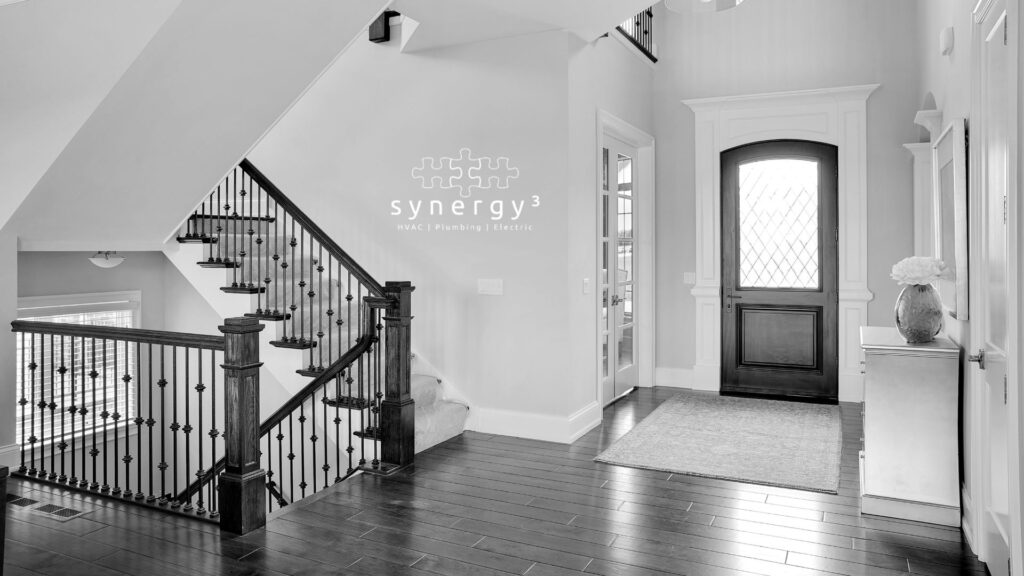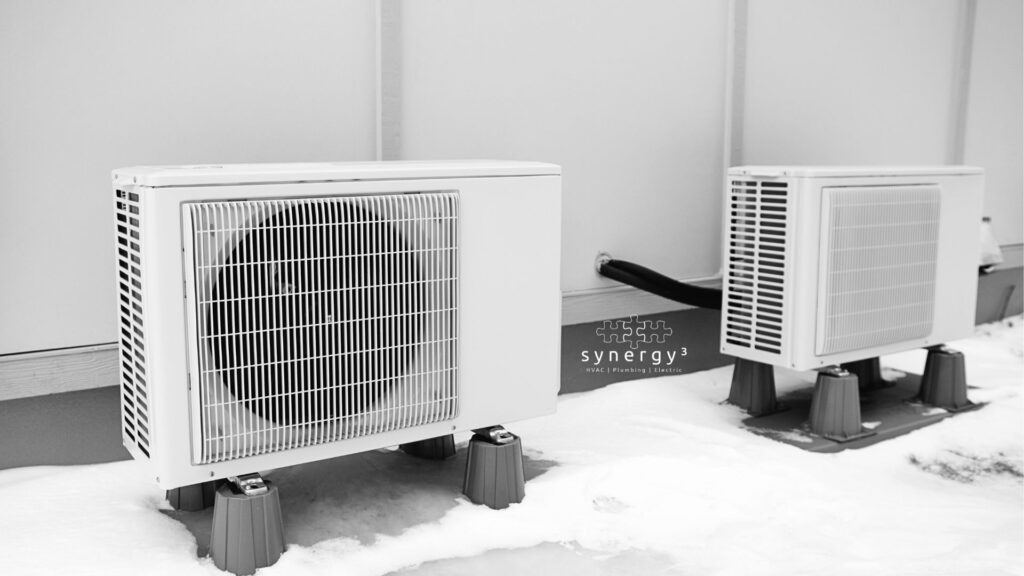
Keeping your whole home comfortable in the winter can be a challenge. In lots of homes there may be a floor or a room that never seems to get warm in the winter. We are going to tell you a little bit about why your upstairs is colder than your downstairs in the winter.
Why Is My Upstairs Cold In The WInter? Four Common Reasons
When we are talking about the upstairs versus the downstairs in this article, we are primarily referring to the bedrooms or top floor as the upstairs, and living room area as the downstairs. We often hear about uneven temperatures being a problem in the winter, and cold bedrooms are a big issue. Here are a few reasons why your upstairs may be colder than your downstairs, and how to fix the problem!
- Static Pressure In Your Ductwork
- Only One Thermostat For the Whole House
- Heat Rises (And Escapes The House)
- Lack Of Insulation Or Old Insulation
Static Pressure In Your Ductwork
Static pressure is the resistance the air in your system faces when it is trying to deliver air throughout the ducts in your home. There are a number of factors that go into the amount of static pressure your system is dealing with, and if they become too much, your HVAC system won’t deliver the air to every space in your home properly.
This is especially a problem when you are talking about large amounts of static pressure and third floor rooms. These spaces are usually the furthest from your HVAC system, and are last in line for the heated air. By the time the warm air is getting to the third floor, the airflow is weak, and you aren’t getting enough warm air to make the space comfortable.
Read More: The 5 Best Ways To Heat A Finished Basement
Only One Thermostat For the Whole House
Most homes only have one thermostat, which is usually in the center of the home somewhere. Your thermostat takes readings of the air, and sends signals to the HVAC system of whether it needs to provide warm air or not. The problem in homes with one thermostat is that it may read perfectly in the living room, but upstairs you may have a room temperature different from the thermostat reading.
There are certain HVAC systems that have multiple thermostats, and even some that provide sensors you can place around the home, so every room is accounted for. Still, most homes in our area have one thermostat, and can run into this issue of misrepresentation of the whole home’s temperature.
Heat Rises (And Escapes The House)
Most people think to themselves, ‘heat rises, so why is my upstairs cold in the winter?’There are certainly homes that have warm rooms upstairs, but in lots of situations, the third floor can become the place that heat escapes.
There are many edges on the top floor of your home, from the walls leading up to the ceilings and roof. These are all points where energy and heat escape. Roofs in the winter are also very exposed to the elements, and if you have a wall of cold directly above you, this can suck up the heat.
Most importantly, and we’ll talk about this in the next point, is heat escaping because of poor insulation.
Read More: The Benefits Of Ductless Heating In Third Floors And Attics
Lack Of Insulation Or Old Insulation
If your insulation is old, falling apart, or was never properly installed, it can be a MAJOR issue for keeping your top floor warm. Your insulation is what retains that warm air, and battles the outside elements in the winter. Proper insulation not only keeps your home warm, but it also saves you money.
If your home’s insulation is allowing leaks and air to pour out of your home, it’s not going to stop your heating system from trying to keep the place warm. This ends up wasting lots of energy, and running up your bills.
How To Balance Heat In A Two-Story House In The winter
Our best solution for balancing the heating in your home is a zoned heating system. When you “zone” your heating, it means you are able to control and heat different spaces in your home independently. This can be done with certain thermostats, or by installing a ductless mini split system.
Read More: The Cost Of Ductless Vs. A Traditional System

Ductless Mini Splits For Zoned Heating
Ductless mini splits are a perfect solution to zone your heating and cooling. Ductless mini splits are attached to a heat pump outside by a small bit of tubing. They can be placed throughout your home, allowing you to operate each mini split independently. This means one zone can be 72 degrees, while another is at 75 degrees.
This zoning allows for additional energy savings, while also customizing and increasing the comfort in your home. You can control the temperature from zone to zone, which also helps you stop arguments over the thermostat as well!
Even if you didn’t want to replace your current heating system, you could add a supplemental ductless mini split to your third floor to ease the job on your HVAC, while improving comfort.
How It Works
Ductless mini splits are connected to a condenser outside. They use heat pump technology to transfer heat from the outdoor unit, through a bit of small tubing, to the indoor mini split. This process is energy efficient, and whisper quiet.
Traditional heating systems have to generate heat from nothing, using ducts to deliver the air around your home. This process is more energy consuming than ductless heat pump technology. A traditional system uses more energy because it creates heat from scratch, and can lose air in the process of pushing it through the ducts.
This is another reason why we love ductless mini splits. Not only are they better for treating each zone, but they also save energy in their operation.
Read More: How Ductless Works
Mini Split Installation In Chalfont, PA
Synergy3 is an expert when it comes to ductless mini split installation in Chalfont, PA, and the surrounding areas. We are able to assess your situation, and make the proper recommendations for what kind of system design you may be looking at for your home. Then we are able to install your system, and provide regular maintenance for years to come. Give us a call at (267) 686-6001, or click here to visit us online!
